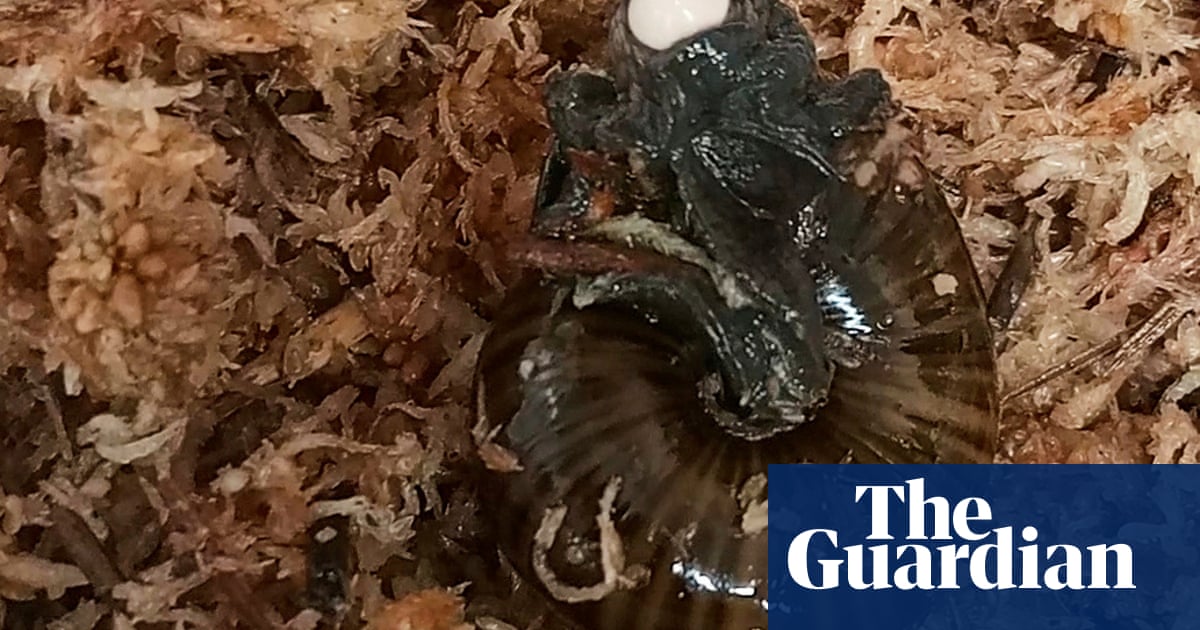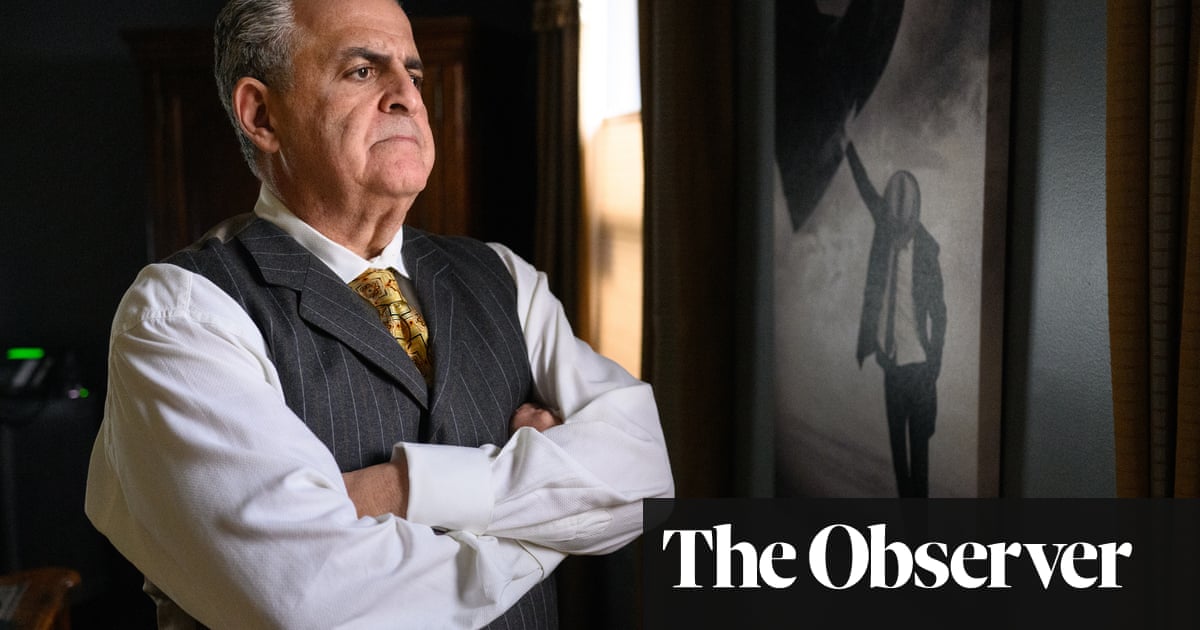“That’s the street where Lemmy lived,” says sculptor Andy Edwards as we drive into the town of Burslem in the north of Stoke-on-Trent, past terrace houses and a ceramics factory. This Friday, a motorcade will travel the same route to Burslem’s Market Place to unveil a statue of the late Motörhead frontman, 10 years since his death – and 50 years since the metal band’s founding.
Phil Campbell, Motörhead’s longest-serving guitarist, will be there, placing a portion of Lemmy Kilmister’s ashes into the plinth. “It’ll be wonderful, finally getting an incredible statue in his home town,” says Campbell. “It’ll be solemn in a way, with enshrining his ashes, but also a celebration of the music and the fantastic character he was. Anything to do with Lem is significant and really special. He’s missed by many. He’s still in my dreams two or three times a week, getting on my case about something.”
The statue has been a long time coming. Three years ago, Edwards – the sculptor behind the Beatles statue in Liverpool – posted on social media about the need for a statue to commemorate the town’s most famous son. Like Lemmy, he was also born in Stoke-on-Trent. “I made a scale model that was found by various fan groups, and then Motörhead management got in touch,” says Edwards. “They stepped in and said they’d support us. They gave us credibility.”
Funded by the band’s management, the initiative found community support: a committed group, including Edwards, worked on the logistics, meeting regularly at a cafe opposite the statue site to put the plans into place.
He spent six weeks creating the likeness of Lemmy – from Staffordshire clay – listening to Motörhead while he worked. Cast in bronze, the statue portrays Lemmy with his Rickenbacker 4001 bass, his head tilted up towards the microphone, playing the opening chord to their 1979 hit Overkill.
“It’s a good chord shape as it involves all his fingers, because he played the bass like a six string. And that was the first song of theirs I ever heard,” says Edwards. The design is inspired by the early 1980s era of Motörhead – Edwards fondly remembers seeing the band perform in 1981 in the city’s Vale Park.

Lemmy – born Ian Fraser Kilmister on 24 December 1945 – spent his early childhood in Stoke and nearby Newcastle-under-Lyme and Madeley. Stoke is also where influential hardcore punk band Discharge were formed in 1977, whose distinctive sound has influenced several genres of metal.
He died on 28 December 2015, four days after his 70th birthday, in part as a result of prostate cancer only diagnosed two days prior to his death. The statue is part of the wider Lemmy Forever movement that seeks to keep the spirit of Motörhead alive.
“He wanted to play to the end,” says Campbell. “And he kind of did – he knew he wasn’t in the best of health, and we knew that as well, but he just wanted to keep playing. We never spoke about the last tour or the end of Motörhead. We always talked about the next record, the next tour, the next album, the next single.”
The unveiling isn’t just a big deal for Motörhead fans. For Stoke – celebrating its centenary as a city this year – it’s also an acknowledgment of the city’s often forgotten role in rock history.
“More than just commemorating an individual musician, I feel the statue of Lemmy represents Stokies as a whole – their talent and industriousness, especially in the city’s music scene,” says local musician Philippe Blenkiron.
Stoke-based singer-songwriter Julia Mosley calls it “wonderful” and “a memento of Stoke’s musical creativity. I’m sure it will be something inspiring for those on a journey in the musical arts.”
The motorcade ahead of the statue unveiling will start at Grumpy’s, a bar tucked down a street near the Trent and Mersey canal in the Longport area of the city, a few minutes’ drive from the installation site. It will also host the official afterparty. The walls are adorned with a mismatch of biker memorabilia and there’s a small stage at the back of the room.
“If Lemmy lived here, this would have been his local,” says bar owner Russ, as he talks to Edwards about the plans for the day, including commemorative T-shirts and wristbands. They’re hoping it will continue Lemmy’s legacy of bringing likeminded people together. “He liked nothing better than seeing people enjoy themselves,” says Edwards. “The main event is people meeting other people.”
The statue may also stand as a tribute to the last of a dying breed, says Campbell. “He was such a unique character, and I don’t think we’ll get another person like Lem come around in the near future. He was pure rock’n’roll, and a wonderful guy. His memory should live on, and Motörhead’s music should live on.”
“It’s really nice that we get to do this in his birthplace,” adds Edwards. “This statue intends to ignite a series of events in Stoke that celebrates Lemmy and his part in musical culture here. We hope the statue will do for Stoke what Shakespeare does for Stratford-upon-Avon, and the Beatles for Liverpool. It will become a pilgrimage site.”

 17 hours ago
4
17 hours ago
4













































